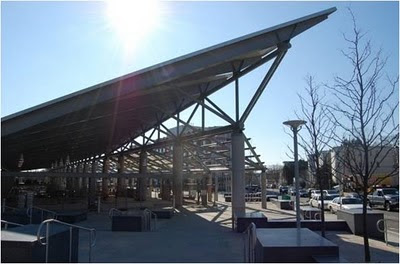September 24, 2010 Commercial Casebook: Profile of St. Mark’s Area Main Street

St. Mark’s Area Main Street includes a mile-long section of Dorchester Avenue that includes Peabody Square, the St. Mark?s parish campus and is also at times referred to as ?Ashmont?. During the 17th century the area was part of the largely uninhabited Great Lots that occupied the vast section of Dorchester south of Meeting House Hill. Families such as the Pierces, Minots and Tolmans were among the few to settle in this area of pasture, forest and marsh land and their houses were located in the Neponset section, just south of Ashmont and Carruth Hills. Although Dorchester Avenue was laid out as a toll road in 1804, the Ashmont area remained generally uninhabited until the mid 19th century, despite the drastically improved transportation route. In 1870, a branch of the Old Colony Railroad was set out through the Peabody Square area, which finally led to a surge in population and development. The final two decades of the 19th century saw the first wave of stylish and ample homes being built on Ashmont and Carruth hills as well as the first substantial commercial buildings in Peabody Square. It was during this time that Peabody Square was developed into an emerging commercial district to support the growing residential population, with the establishment of a railroad station, a market, a hall, stables, a grand church and a fire station.
Around the turn of the 20th century, Boston?s Roman Catholic Archdiocese began to purchase land to build a new parish church just north of Peabody Square St. Gregory?s parish in the Lower Mills neighborhood (to the south of Peabody Square) was beginning to feel the growing pains of an expanding congregation and the Archdiocese set out to create a new parish to respond to the new residents in the area. A small wooden chapel was built in 1899 in that location. The parish, called St. Mark?s, built a large new red brick church building in 1914 (said to have been inspired architecturally by the pioneering All Saints?),which soon became the center of an expanding campus. A rectory, a school and a convent were added in the next few years.
Through our work, we discovered that the district?s historic buildings could be put into three categories:
? Three story wooden mixed use buildings: often on corners or take up entire blocks, some with elaborate detail and architectural forms- many have been severely altered on commercial
? One story commercial/industrial blocks: found mostly north of Peabody Square, these one story commercial blocks were mostly built in the 1920s and 1930s.
? Institutional Buildings: St. Mark?s area features several buildings that are maintain ecclesiastical, educational or a non-profit use
We will take you through these different categories next week on the blog: stay tuned!






